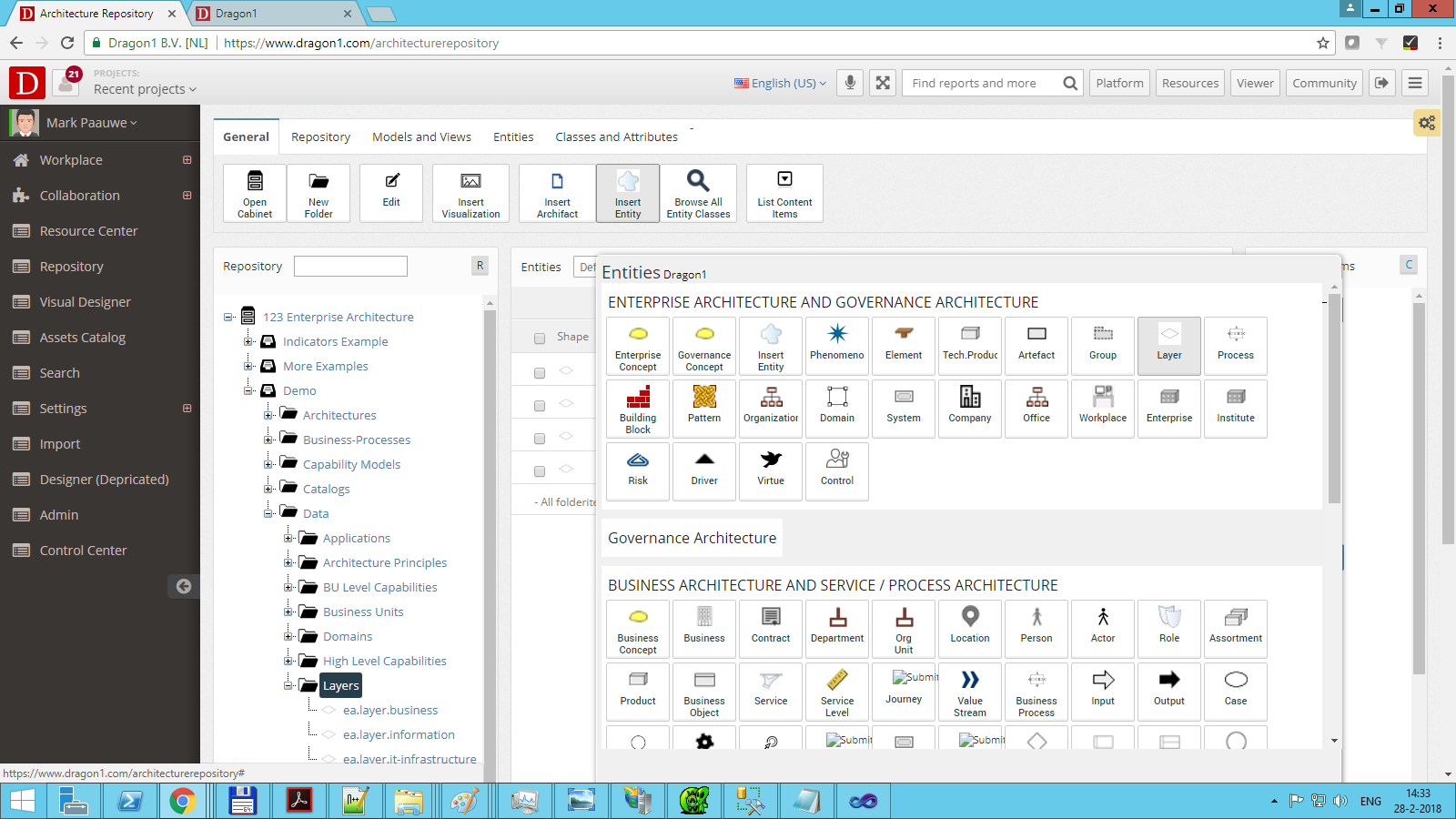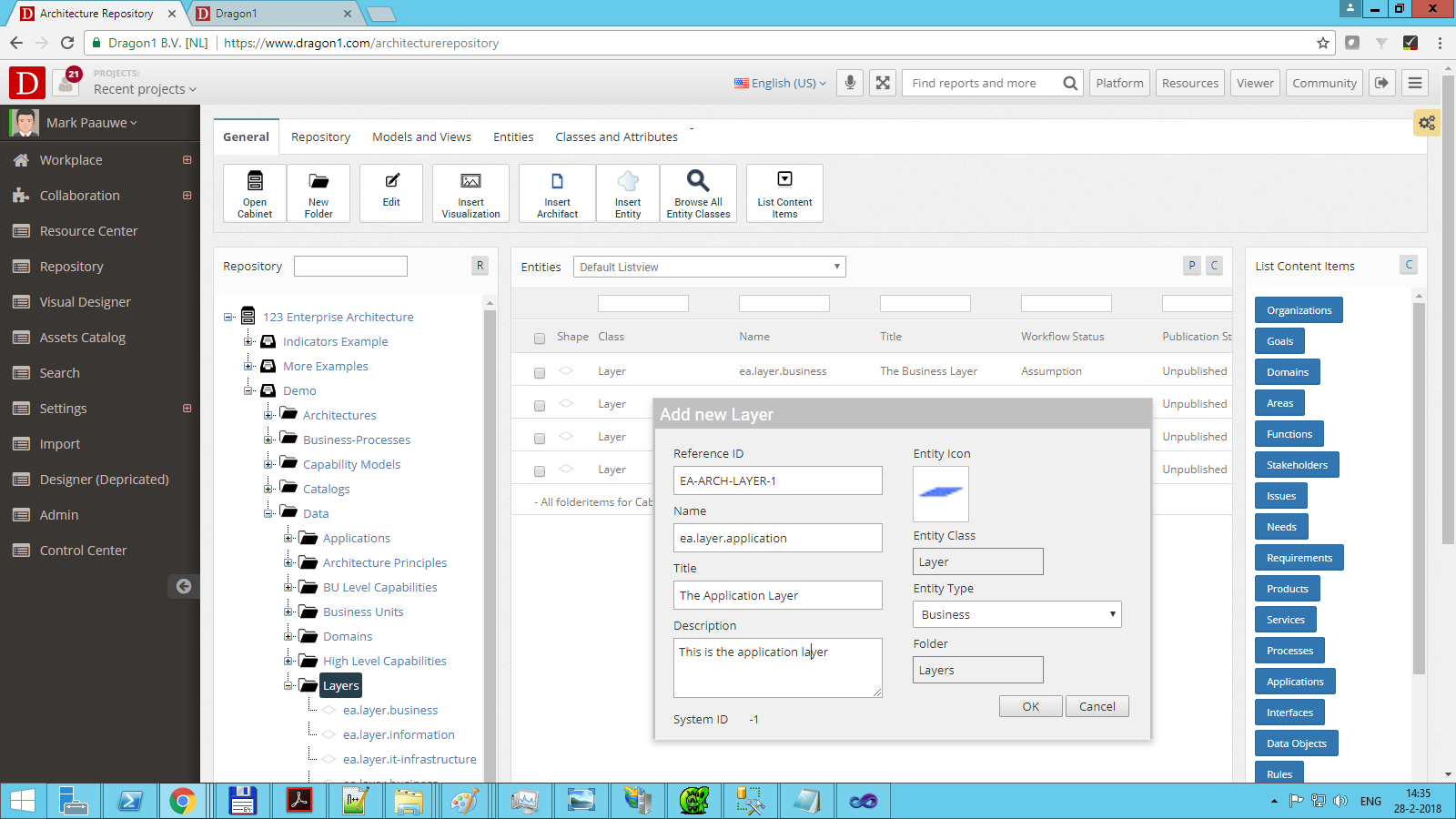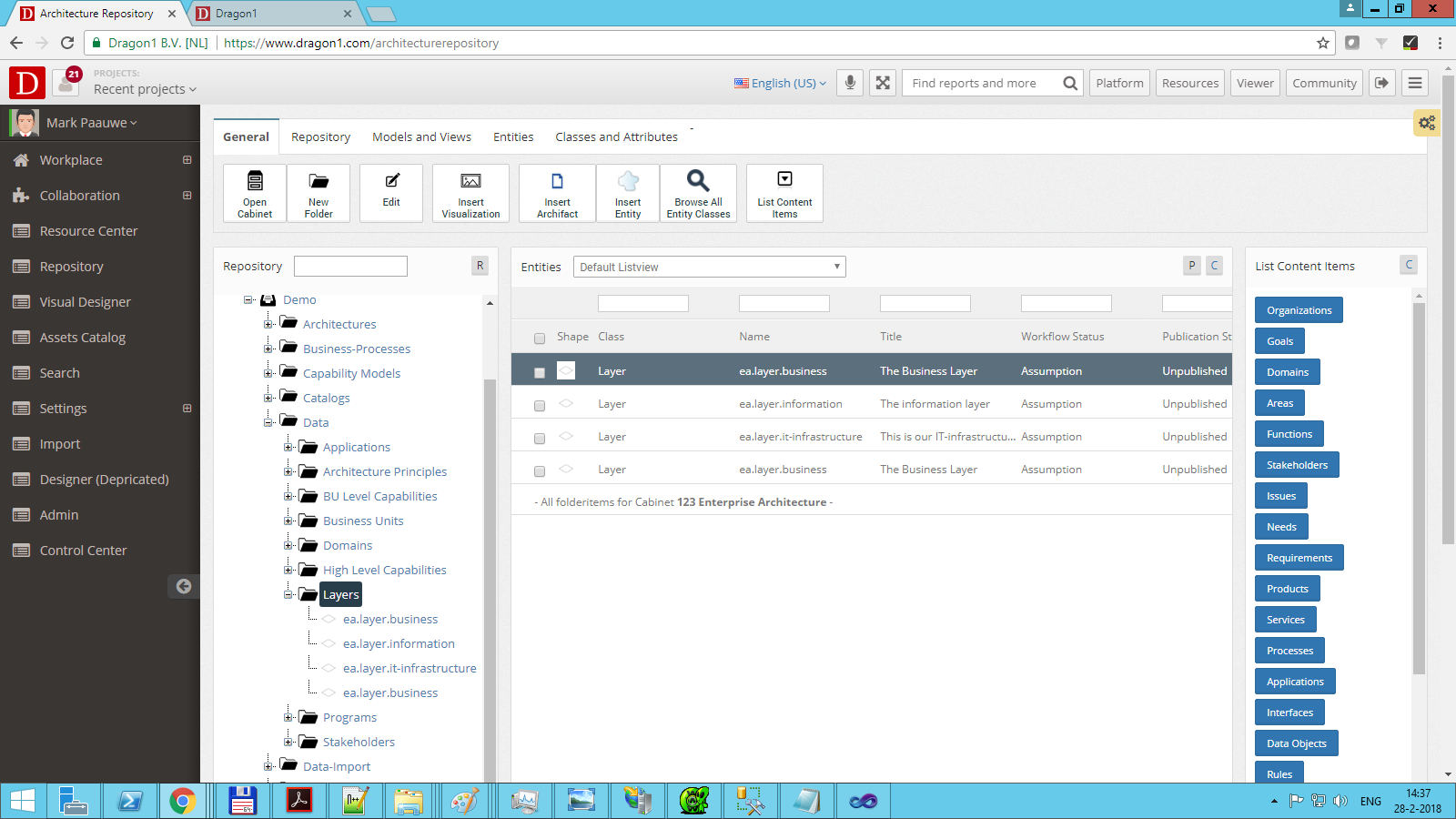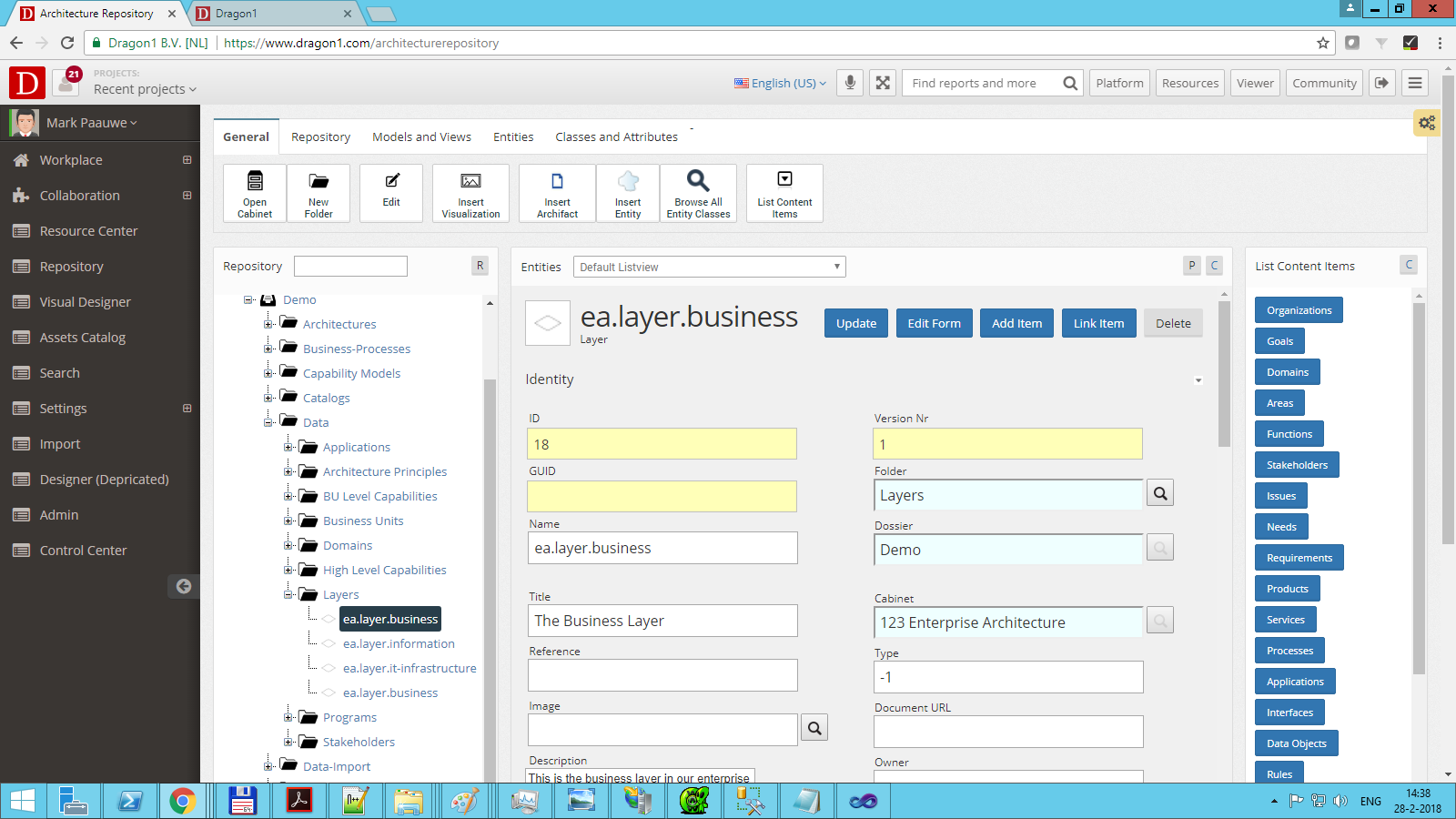How To Create an Architecture Layer
On Dragon1, you can create your architecture layers and collections of architecture layers.
Even better, you can validate (with dynamic views and reports) if you have used correct or existing architecture layers in your models, views, and diagrams.
Creating A Layer
Below, you see how to enter an architecture layer in the repository:
Updating a Layer
You can add, update, and delete a layer using menu buttons and the form.
In the form, you change the publication status and the workflow status of an architecture layer, and you can assign this architecture layer to a collection, an owner, and an administrator.
With that, you can report and show in the views what data quality you are using: Are you using approved data from a collection, or are you using your self-created data?
Using an Architecture Layer in a Model
You can use the architecture layer as an entity in a model.
Using an Architecture Layer in a View
You can use an architecture layer in a view to show what entities are related to it and which are not related.
You can visually report if all the layers from a collection were used and if someone has created and used new layers.
Using an Architecture Layer in a Visualization
You can visualize architecture layers differently with your shape and icons of choice.
Using an Architecture Layer in a Report
You can create a textual report on architecture layers and their usage in your architecture, projects, solutions, or organization.




